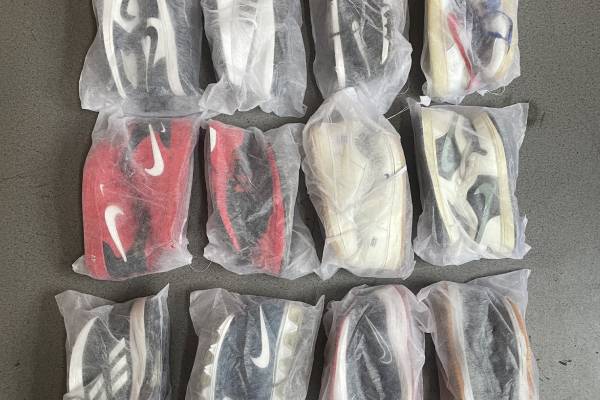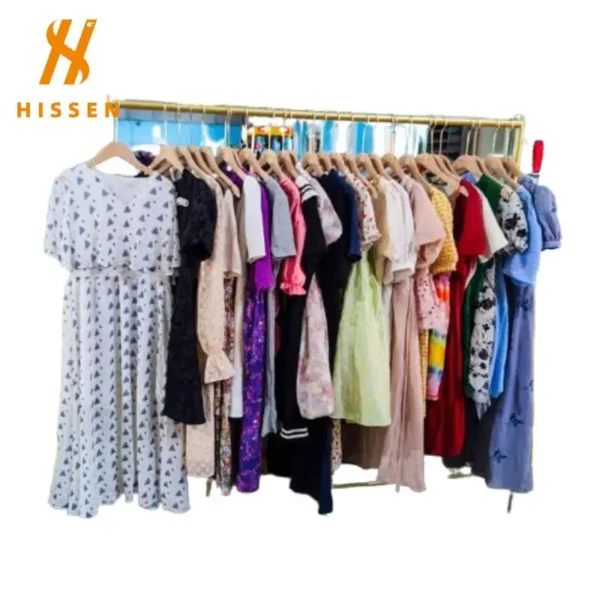Buying used brand shoes online can save you money. But these used brand shoes have been worn before, so it’s important to look closely before spending your money. When buying second hand branded shoes, you need to check more than just the price. Below are 3 things to look at to make sure you’re getting good value.
I. Check the Photos — Are They Real and Clear?
Photos are often the most direct way to evaluate product quality before delivery. A reliable supplier or seller should provide clear images from multiple angles — full side views, heel and toe close-ups, outsole wear, insole condition, logo details, and model tags. These images help you verify brand authenticity and assess product grade for higher-value orders, consider third-party authentication services or AI-based verification tools. Authentic goods reduce customer complaints and improve your store reputation.
Avoid suppliers who use low-light photos, show only one shoe, or reuse stock images. If you can’t see the actual item, don’t commit to large purchases. Always ask for extra photos — especially the size tag and outsole tread. For B2B orders, request random samples from the batch. If the seller doesn’t cooperate or delays replies, it may signal product risks or misrepresentation, which can damage your resale business of second hand branded shoes.

II. Understand Seasonal and Regional Demand

B2B buyers should pause to consider whether the used brand shoes they are purchasing match current and near-future market demand. For example, buying heavy winter boots at the start of summer can tie up your capital for months unless you operate in a cold-weather market. On the other hand, athletic sneakers with breathable mesh uppers tend to move faster during spring and summer — especially in urban or tropical regions.
Different regions also have different preferences when it comes to colors, sizes, and shoe types. For instance, white sneakers may be highly popular in some urban European markets but less desirable in rural or industrial zones where shoes get dirty faster. Similarly, narrow-cut shoes may underperform in regions where customers prefer wide-fit comfort.
Before you pay, review your past sales data if available. If you’re new to the market, check trends on local ecommerce platforms and fashion forums or ask used brand shoes wholesale partners what sells best during the current quarter. Aligning your purchase with the season and your core buyer base will help reduce clearance pressure and improve turnover.
Ⅲ. Plan for Returns and Defect Risks
Even with good suppliers and detailed inspections, not every second hand branded shoes shipment will be perfect. Before you pay, it’s essential to plan for the possibility of product issues — especially when buying in bulk. Some defects, like worn soles, heavy odor, or incorrect sizing, may not be visible in photos or disclosed by sellers.
To avoid these problems, clarify your agreement with the seller before sending funds. Ask what happens if more than a certain percentage of the batch is defective. Will they offer replacement pairs, credit for future orders, or partial refunds? Get these terms in writing — email or messaging apps with clear records are often enough.
Also, set up your own internal policy for how you will handle complaints or returns from your downstream customers. Will you issue refunds for certain types of damage? Will you discount flawed products and move them through clearance sales? Having a strategy in place — even a simple one — will help you stay professional and protect your brand image.

Conclusion
Getting used brand shoes online can be a smart move if you take the right steps. You should always look at clear photos, make sure the used brand shoes are real, understand seasonal and regional demand, and plan for returns and defect risks. These simple actions can help you avoid scams and bad deals. Looking carefully before buying will help you avoid trouble and find used brand shoes your customers will be happy to wear. Good checking leads to good selling. If you want to check more comprehensive guide on buying second hand branded shoes, please take a look at How to Buy Good Used Brand Shoes Without Wasting Money.
FAQ
How can I tell if the photos of used brand shoes are trustworthy?
A solid seller will provide multiple well-lit photos showing all angles of the shoes. You’ll want clear shots of the soles from front and back, close-ups of any brand logos or tags, and pictures of the interior lining. Authentic listings always show both shoes together and include shots of any serial numbers.
Why is regional demand analysis critical for used shoe purchases?
Preferences vary by location (e.g., white sneakers sell better in urban Europe). Always review local e-commerce trends or consult used brand shoes wholesale partners to avoid unpopular styles that increase clearance pressure in your specific market.
What defect terms should be clarified with sellers upfront?
B2B used brand shoes buyers need to formalize policies for common issues like heavy odor or sizing errors. Specifically negotiate: 1) Acceptable defect percentages, 2) Replacement/refund options, and 3) Response timelines – documenting these via email to prevent disputes.



